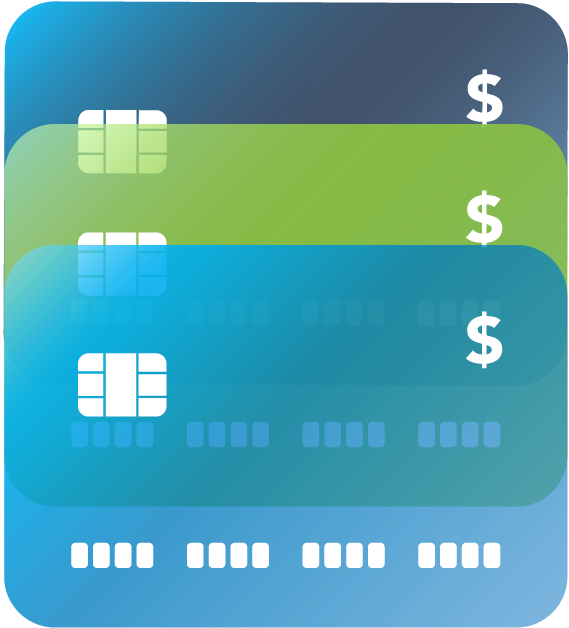Banking services have changed a lot in a short time thanks to the ever-increasing rate of technological innovation. There are so many new terms that seem similar but have different meanings, especially relating to open banking. In this article, you’ll learn about the similarities differences between open banking, embedded finance and banking as a service (BaaS). Plus, we break down some examples of use cases of BaaS and open banking so you can better understand the benefits.
Open Banking, Embedded Finance and Banking as a Service (BaaS): What’s the Difference
Open Banking allows banks to host accounts and provide transaction methods for financial and non-financial businesses to embed into mobile applications. Banks provide a suite of Banking as a Service (Baas) products using technology like APIs. These technologies enable the capability for other organizations to embed financial functionality into other products and services.
Let’s look at all three in more detail.

What Is Open Banking?
Open banking uses technology like APIs to offer nonfinancial and financial businesses a network of financial products like accounts and transaction methods. This means third-party providers are allowed access to payment products so they can design and build new user experiences. From the bank perspective, Open Banking is like extending their banking charter to other companies.
An example of open banking would be a personal finance app enabled by banking techonology that lets customers view insights into their monthly spending online.
What Is BaaS?
BaaS is a component of Open Banking. BaaS is the products financial institutions offer to non-financial and financial companies to enable banking services. It facilitates bank functionality supported by the infrastructure provided by the licensed bank’s technology layer. Essentially, BaaS ecosystems allow non-banks to offer banking services.
An example of BaaS is a car company offering financing directly through its website in partnership with a traditional bank. It can provide all the necessary services under its own brand while maintaining compliance with banking regulations and without the burden of registering and maintaining its own financial institution charter.

What Is Embedded Finance in Banking?
Embedded finance is the concept of taking BaaS solutions and embedding them into a non-financial business’ mobile application or website. With embedded finance, any business could have a financial component incorporated into its business.
For example, a department store would like to issue a branded credit card for their store with different features, rewards, and perks. The department store can partner with a bank to issue the card and obtain end users without becoming a financial institution themselves. The department store would still be heavily involved in compliance and regulatory obligations, but the banking piece is managed by the bank.
The concept of embedded finance can create a personalized financial experience for dedicated end-user bases of existing businesses that adds value to the customer.

BaaS Use Case Examples
There are four main users of BaaS and open banking: traditional banks, fintechs, non-fintech companies and end users. Traditional banks have the necessary licensure to provide core financial services which allows fintechs and non-fintechs to embedded BaaS functionality into their user experiences.
Below are some examples of use cases for BaaS.
Online Banking
Fintech firms can provide online banking services to clients via BaaS in addition to offering services that help people track their incoming and outgoing transactions. For modern users, these user-friendly online services might be more convenient and accessible than traditional banking models.
Card Issuing and Acquiring
BaaS also enables issuance of credit, debit and prepaid cards. The bank is the sponsor for these card programs and the fintech or non-fintech can brand and acquire customers for their programs. The cards can be issued virtually or have a plastic component as well.
Some examples issued by Evolve include the Dave debit card and the Uber Pro card.
Loans and Buy Now, Pay Later
Companies can use BaaS to offer lending services to customers. An example would be an airline that uses one-click financing to provide smooth digital experiences, guarantee travel plans won’t be disrupted and spread the cost of a booking over time. It also means companies can offer “buy now, pay later” financing.
Neobanking
While it’s possible to set up a website and mobile application, banking regulations and compliance requirements are rigorous to become a bank in the United States. BaaS solutions lets businesses offer banking services like a traditional bank. Financial startups and innovators can set up a neobank without applying for a banking license by partnering with a BaaS bank.
Investment Services
Non-bank companies can use BaaS infrastructure to help customers automate finances and invest assets, for example, creating customized investment plans that use low-cost index funds or automating the balancing of portfolios to align with a customer’s investment strategy.
Evolve Bank & Trust’s BaaS environment is highly secure, and is customizable and flexible to fit your business’ use case. Below are the benefits of using BaaS or open banking for businesses.
Why Partner With Evolve?
Benefits for Bank and Non-Bank Companies
Businesses can benefit from the BaaS and open banking models in the following ways:
- By making customer experiences faster and smoother, with easier checkout flow and more payment options, business can increase conversions.
- There are many opportunities to diversify the product offering to engage and retain customers.
- Thorough data enables businesses to create a more personalized service and further improve customer experience.
Additional benefits for end users include enhanced customer experience, better security and more ways to manage their money.
Banking is evolving fast and providing more convenient and intuitive solutions for businesses and consumers alike is key to growth.
